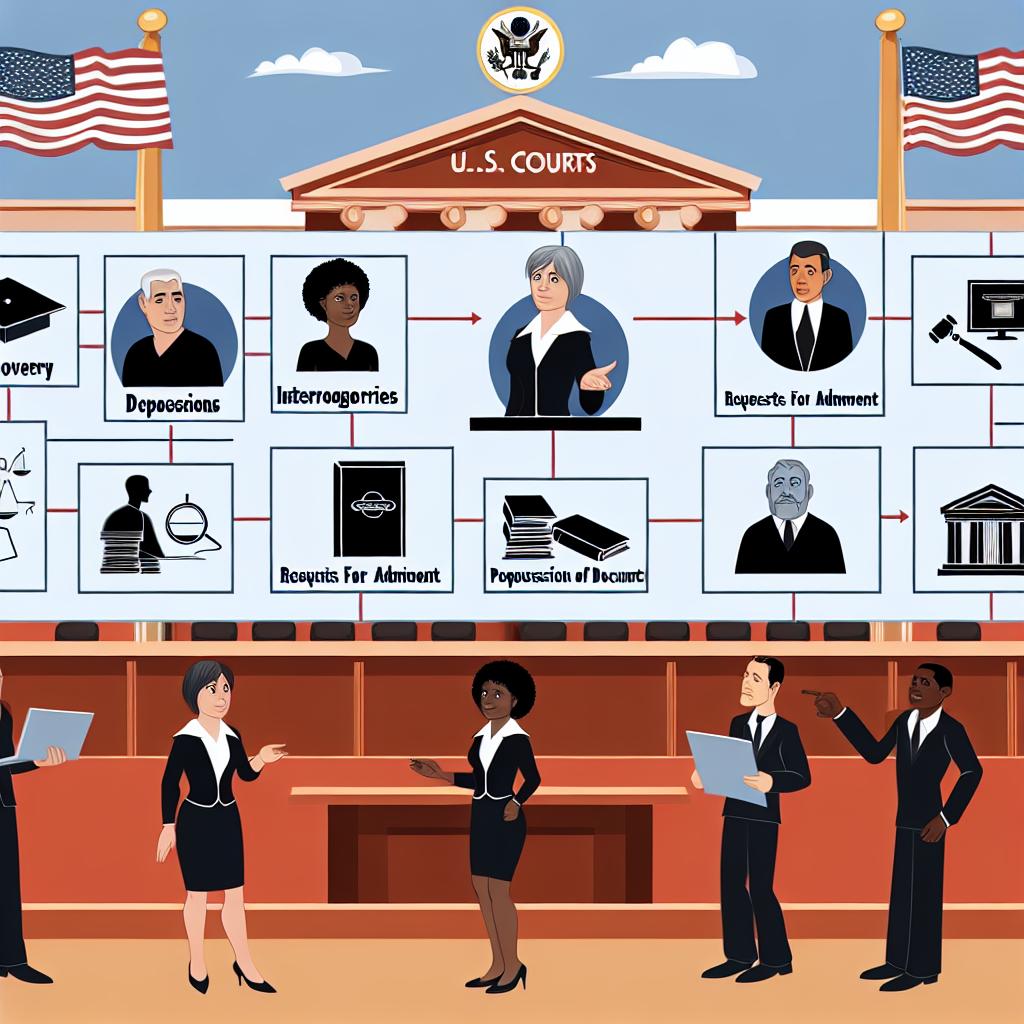Overview of Discovery in U.S. Courts
Discovery in U.S. courts is a pivotal component of the pre-trial phase in litigation, allowing parties involved in a legal dispute to exchange information and gather evidence. This process is instrumental in ensuring that trials are conducted fairly, as it promotes transparency and helps prevent surprise during court proceedings. In essence, discovery facilitates the equitable distribution of knowledge between adversaries, thereby fostering a just outcome. Governed by both federal and state procedural rules, discovery encompasses various techniques and tools that are strategically used by legal practitioners.
Interrogatories
Among the fundamental methods of discovery, interrogatories play a critical role. They represent a formal set of written questions posed by one party to another. The recipient has the responsibility to respond with written answers, which must be provided under oath. Interrogatories are pivotal in laying the groundwork for a case, as they often address the foundational aspects such as basic facts, identifications of involved parties, and key issues under dispute. Because of their written format, they are relatively cost-effective and less burdensome compared to other discovery methods, making them a popular choice as an initial approach to gathering essential information.
Depositions
Depositions offer another dynamic dimension to the discovery process. In depositions, legal representatives have the opportunity to question witnesses directly, under oath, but outside the courtroom environment. Typically conducted in a lawyer’s office, these sessions are meticulously documented by a court reporter, who transcribes every word exchanged. Depositions are invaluable for obtaining comprehensive details, assessing witness reliability, and crystallizing testimony for use during the trial if necessary. They are an effective means of securing valuable testimony, especially from witnesses who might be unavailable to testify at trial because of various constraints.
Requests for Production of Documents
Requests for Production of Documents can be considered a cornerstone method in assembling the evidentiary foundation of a case. Through these requests, one party formally seeks the production of documents from the opposing party that hold relevance to the litigation. Such documents often include contracts, business records, emails, and various forms of written communication. This discovery tool is critical in allowing parties to access material evidence that can substantiate their claims or defenses, thereby influencing the trajectory of the legal proceedings.
Requests for Admissions
The technique of Requests for Admissions is intended to refine and simplify the issues at stake in litigation. Through this method, one party asks the other to admit or deny specific factual statements regarding the case. The responses, which are made in writing, serve to establish a set of facts that are not in dispute, thus streamlining the trial process. By narrowing down contested issues, Requests for Admissions aid in focusing the court’s attention on the genuinely contentious aspects that require judicial intervention.
Physical and Mental Examinations
When a party’s physical or mental condition is a matter of concern in a case, the courts may order physical and mental examinations to be conducted. This discovery method ensures an impartial evaluation of the condition in question, typically carried out by a certified and independent medical expert. The findings from these examinations can have significant implications for the case, providing objective evidence that can support or undermine claims about an individual’s health status, which may influence legal outcomes.
E-Discovery
In an era where digital information is ubiquitous, e-discovery has emerged as an increasingly critical and complex facet of discovery. E-discovery pertains to the identification, collection, preservation, and analysis of Electronically Stored Information (ESI) such as emails, social media content, electronic documents, and more. Managing e-discovery is a nuanced task, often requiring modern software tools and expert insights to effectively handle vast quantities of digital data. E-discovery not only facilitates access to digital evidence but also poses significant challenges such as maintaining data integrity, ensuring compliance with privacy standards, and employing efficient data filtration techniques.
Understanding and proficiently applying these diverse discovery methods is essential for legal professionals and litigants involved in the U.S. judicial process. Each discovery tool serves specific purposes and is selected based on the nuances of the case at hand, thereby contributing to the thorough preparation and execution of a trial. The adept use of discovery can have far-reaching effects on case outcomes, furthering the principles of fairness, transparency, and justice that underpin the judicial system in the United States.
Discovery, with its multifaceted processes, underscores the criticality of preparation in litigation. The strategic use of these tools enables parties to illuminate the facts, uncover pertinent evidence, and establish robust case theories, all of which serve as essential precursors to a fair trial. By providing equal access to information and promoting candor, discovery procedures play a vital role in upholding the integrity of the legal process, assuring that the court’s ultimate findings are grounded in a comprehensive understanding of the facts.
Moreover, the evolution of discovery reflects broader changes in the legal landscape, as new technologies and societal shifts influence both the opportunities and challenges faced by litigants. As trends in electronic communication and data storage continue to evolve, so too will the methods of discovery, necessitating ongoing adaptation by legal professionals to navigate the complexities of modern litigation effectively.
In summary, discovery in U.S. courts is more than just a procedural requirement; it is a cornerstone of the adversarial system that champions the equitable pursuit of truth. Through tools like interrogatories, depositions, production requests, admissions, and ESI examination, discovery empowers litigants to thoroughly explore the dimensions of their cases, laying the foundation for informed and just resolution of legal disputes.
